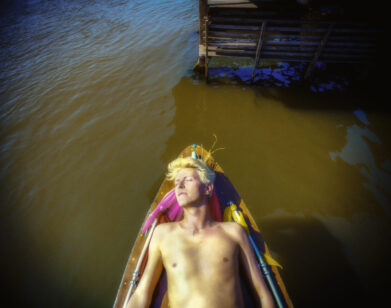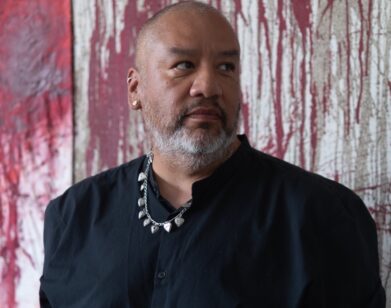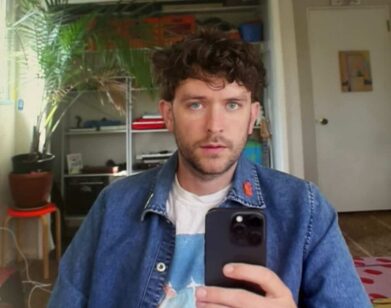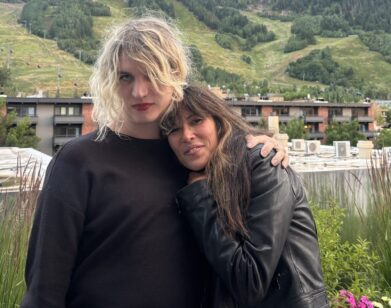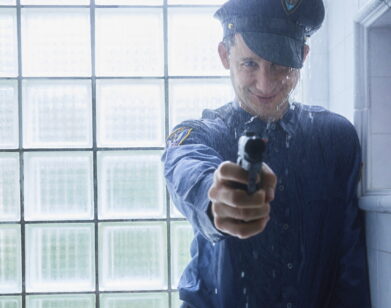PS1 Gets a Playground
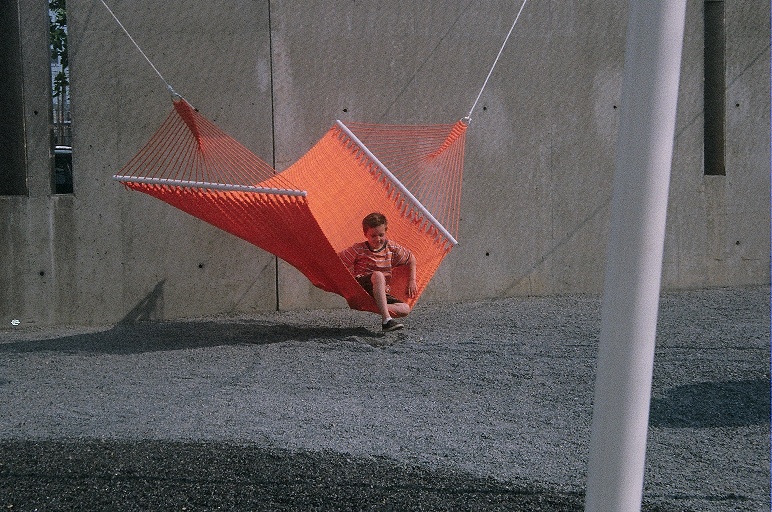
JING LIU AND FLORIAN IDENBURG
Last Thursday, MoMA PS 1 unveiled the newest installment of its Young Architects Program. After 60 years, the former school has a playground again. Pole Dance by architects Florian Idenburg and Liu of SO – IL (Solid Objectives; they’re both formerly of SANAA), covers the entire P.S.1 courtyard with a grid of 25-foot white poles rooted in wind-sail joints, connected by bungee cords and nets, interspersed with “activators”—bright orange hammocks and pastel beach balls, water misters, hanging ropes, and a wading pool.
Idenburg calls the installation “a game without rules.” Upon entering the courtyard, visitors are confronted with a panorama of options; choosing to pull a hanging rope, push a pole, rest in a hammock, or jump affects the rest of the installation. In an adjacent courtyard, another series of connected poles feature ambient noise created by the architects who go under the name Arup. Each pole has its own sound, which can be played like instruments by a downloadable smart-phone app. “This installation tries to see if we can bring back the playfulness, the interactive-ness, the elasticity, so to say, that the virtual realm has, back into the physical,” Idenburg said, “to redirect people’s attention to the physical, the sensorial and through that maybe develop a new sense of care for the environment.”
I asked Jing Liu about Pole Dance:
ESTHER WEISBROD: P.S. 1 asked you to incorporate Shade, water, seating, and a bar area into your project for the Warm Up music series. Where did you go from there?
JING LIU: On top of that they asked us to think about sustainability, so we thought about the contradictions of having a structure up for three months that dealt with sustainability. We thought about technological solutions—recycling, or solar panels, in order to make a metaphor for it. Instead, we chose a metaphor for the natural environment, and the system we operate in, which is something that’s constantly in flux and we are responsible for its well-being and its destruction.
WEISBROD: How did your proposal differ from what came out in the execution? Were there any unexpected challenges in the PS1 space or otherwise in bringing the project to completion?
LIU: We are actually the first installation to take over the entire courtyard, and the ground condition of the courtyard is unpredictable- years and years of use in the courtyard and once you start digging in the courtyard you never know what you’ll find. We actually dug everywhere so there were a lot of perimeter places. So it was very unpredictable, but we didn’t run into too many problems. We had one instance where we had water overrunning and flowing — I think there was an old pipe there.
In our practice we constantly try to find ways to incorporate elasticity and instability into architecture. This is because by doing so, we allow for interdependence, interactions and the inherent resilience to be visible.
This, however, is not easy to achieve. From early on, between our structural consultant, Buro Happold and us, it was clear that it’s impossible to calculate so many variables included in the structure, and how they affect each other purely numerically. We had to build several full-scale mock-ups to understand the performance of elasticity. First a stiff one, then a loose one, and something in between. When the entire structure was built, it was not built to a finite form, but rather a system that took many weeks of calibration. There is no baseline, it’s a system constantly in flux, adjusting itself to find equilibrium in the progression of time.
WEISBROD: What are you supposed to do in this space and installation?
LIU: Well, you can really see the structure sway gently in the wind, and a person sits and [the installation] starts to move in a different manner, so you really see the different forces between human and nature. It’s always interesting to not be able to see the actual person but just how they move.
WEISBROD: Pole Dance has been described as resembling the interior of a computer game. How do you think technology influences not so much construction but architectural thought?
LIU: With the advancement of Internet technology, the world has come to look more and more like a transforming “cloud.” However critical one can be of the diminishing of our attachment to physical space and the idea of net-democracy, it is an irreversible process we have undertaken.
We attempt to update the physical with new orders of the virtual by incorporating new ecologies, economies, energies, flows, fantasies, into a network of intersections and knots. There is no reboot. The process is an instant loop, with no end, no result.
WEISBROD: Were there any vernacular references you especially wanted to use?
LIU: We’re very conscious of making something you can feel affection for. Poles are very elemental objects, and we’re trying to use vernacular objects to make a connection. I think people feel quite comfortable with having another form to relate to.
WEISBROD: Is this functional architecture?
LIU: It does provide shade. To bring our metaphor and message to people it is very important that people enjoy it and feel comfortable and affectionate for it. So we made sure there is playfulness in it. So there’s water sand shade and in that way it is functional and hopefully it will function in a metaphorical way. And we hope that everyone will understand it.
PS 1’S WARM UP SERIES BEGINS JULY 3. POLE DANCE IS ON VIEW THROUGH SEPTEMBER.


